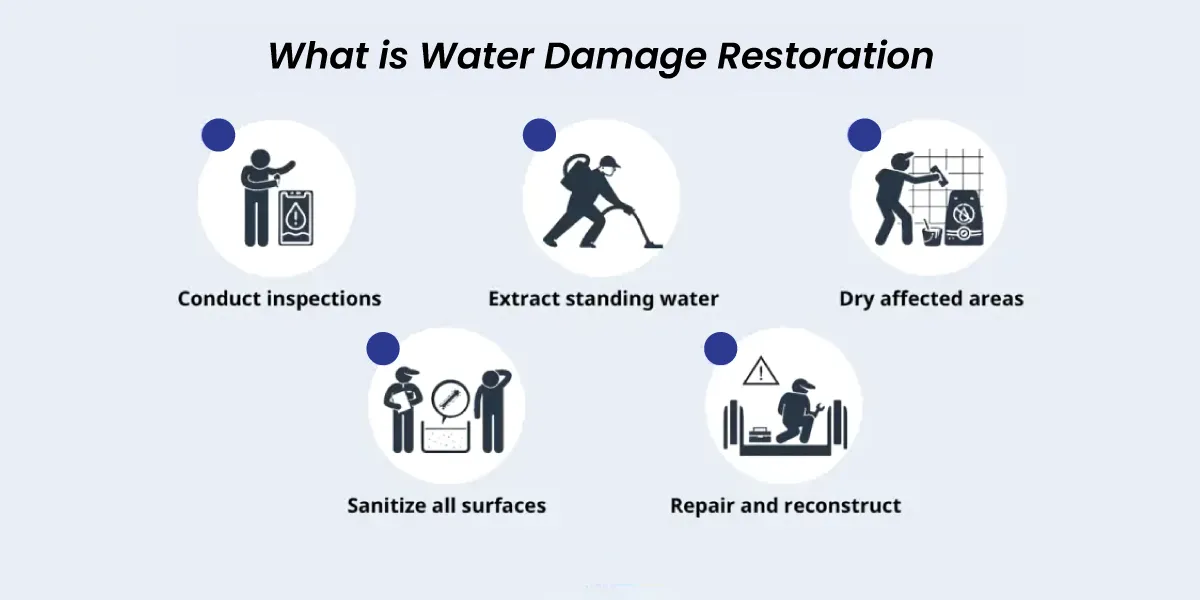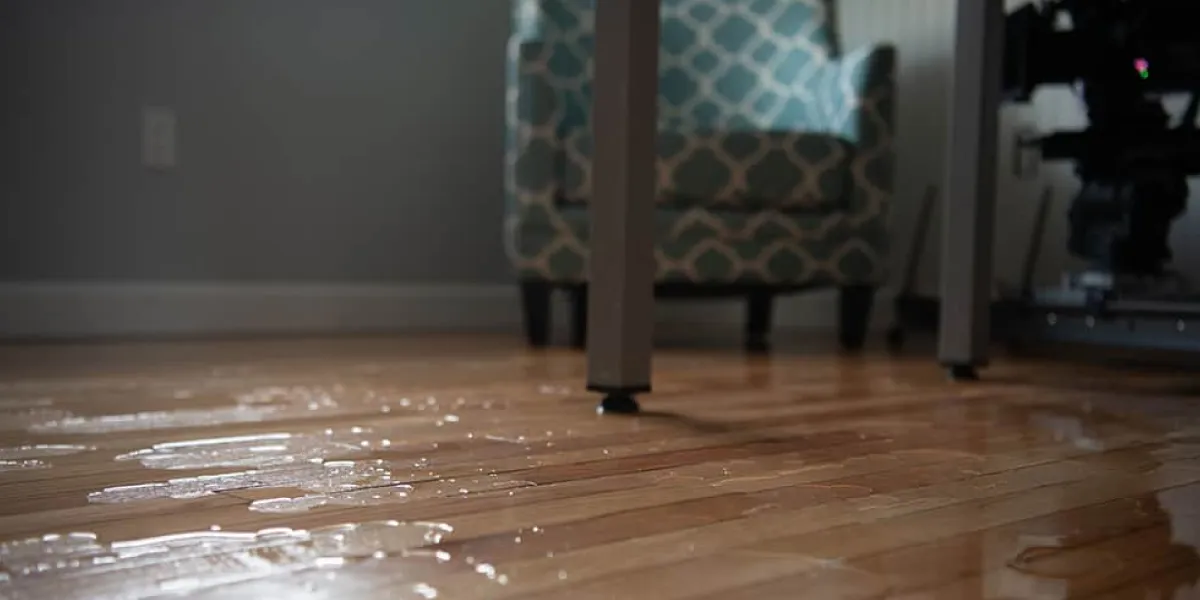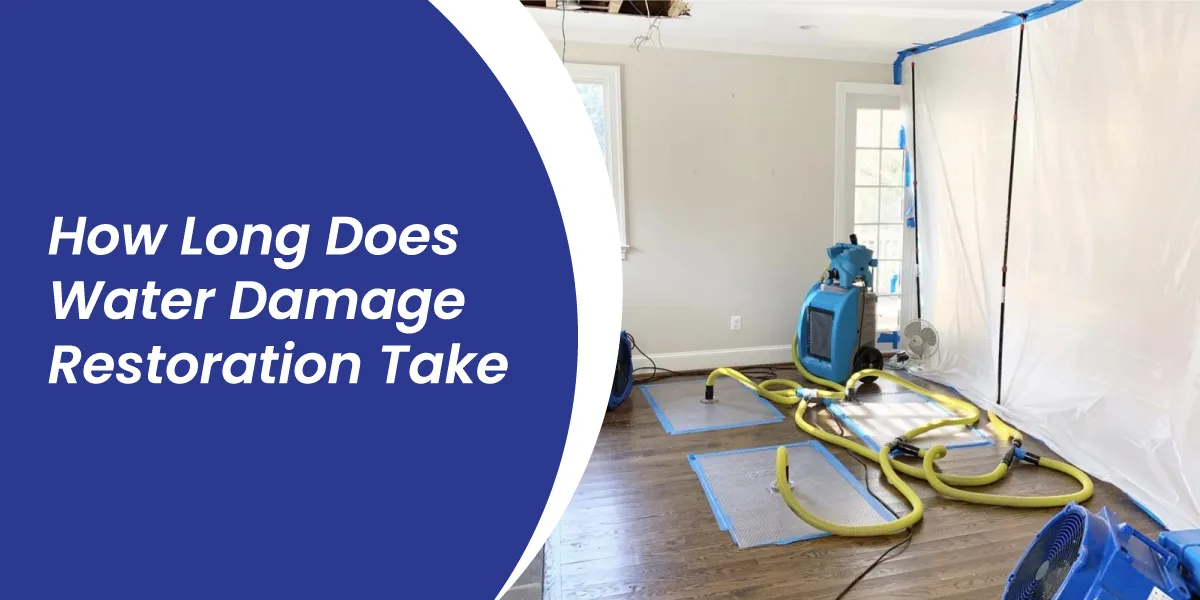Water damage restoration is a complex process that can vary significantly in duration depending on several factors, including the extent of the damage, the type of materials affected, and the promptness of the response. Understanding the timeline for water damage restoration can provide peace of mind for homeowners and businesses dealing with the aftermath of flooding or water leaks. This article will explore the typical stages of water damage restoration and the factors that influence the duration of the process.
What is Water Damage Restoration?
Water Damage Restoration is the process of returning a property to its original condition after it has been affected by water intrusion. This comprehensive process involves several key steps to ensure that the property is thoroughly restored and safe for occupancy.
Key Steps in Water Damage Restoration
- Inspection and Assessment: The first step is to assess the extent and type of water damage to determine the appropriate actions needed for restoration.
- Water Removal: Removing standing water is critical to prevent further damage and health risks. This is typically done using specialized tools such as water vacuum cleaners and industrial fans.
- Drying and Dehumidification: High-grade air movers and dehumidifiers are used to speed up the drying process, ensuring that all surfaces are thoroughly dried to prevent mold growth.
- Removal of Damaged Materials: Unsalvageable materials such as drywall, ceilings, and floors are removed to prevent mold growth and structural damage.
- Cleaning and Sanitization: The affected area is cleaned and sanitized to remove contaminants and prevent health hazards.
- Reconstruction: Finally, damaged structures and materials are repaired or replaced to restore the property to its original condition.
Importance of Water Damage Restoration

Prevents Structural Damage: Prompt restoration helps prevent structural damage by addressing weakened building materials.
Mold and Mildew Mitigation: Proper drying and disinfection prevent mold and mildew growth, ensuring a safe and healthy indoor environment.
Preserves Personal Belongings: Timely restoration increases the likelihood of salvaging personal belongings and reducing emotional and financial losses.
Maintains Property Value: Restoration ensures that the property remains in top condition, maintaining or even increasing its value.
Timeframe for Water Damage Restoration
The duration of water damage restoration can vary greatly, from a few days to several weeks or even months, depending on the extent of the damage and the efficiency of the restoration process
Stages of Water Damage Restoration

Mitigation: Includes water removal, drying, and dehumidification. This stage can last from 3 to 14 days.
Rebuild: Involves repairing and replacing damaged structures and materials. This stage can take from 1 to 4 months or longer.
Factors Affecting Restoration Time
Type and Extent of Damage: Minor damage can be fixed within a week, while severe damage may take several weeks or months.
Source of Water: Fresh water sources are easier to clean up than contaminated water sources, which require more extensive cleaning and sanitizing.
Size of the Affected Area: Larger areas take longer to restore.
Materials Affected: Different materials have different drying and repair times. For example, wood floors may take longer to dry and repair than stone floors.
Importance of Quick Response
Delaying restoration can lead to further damage, such as mold growth, which can extend the restoration process.
Professional Assistance
Choosing a skilled restoration company can significantly influence the duration of the restoration process.
Summary
Water damage restoration typically involves two main stages: mitigation and rebuild. The mitigation phase, which includes water removal, drying, and dehumidification, can last anywhere from 3 to 14 days, depending on the severity of the damage and the size of the affected area. The rebuild phase, which involves repairing and replacing damaged structures and materials, can take anywhere from 1 to 4 months or even longer for extensive damage. Factors such as the source of the water, the type of materials affected, and the availability of supplies and labor can significantly impact the restoration timeline.


